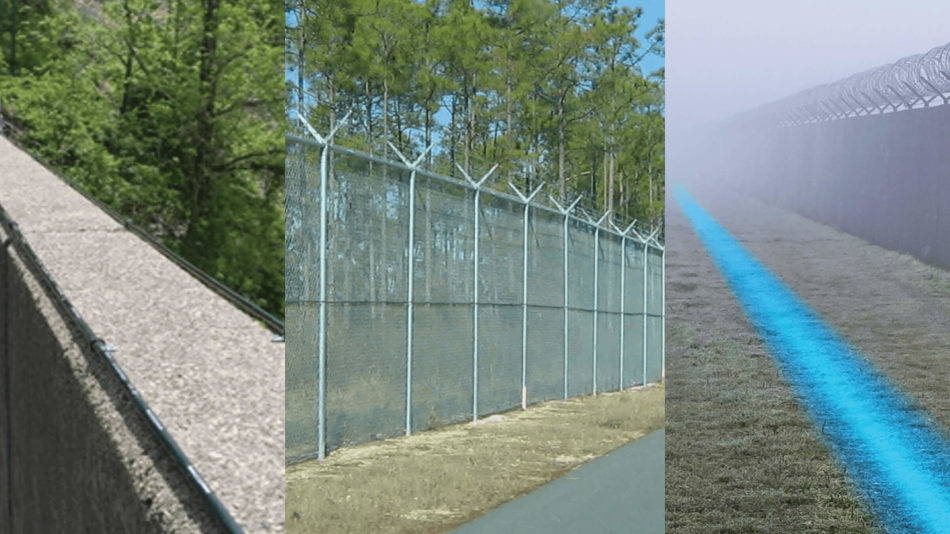Why a Fiber Optic Security System Is Important for Sensitive Facilities and Environments
Why a Fiber Optic Security System Is Important for Sensitive Facilities and Environments
Blog Article
The Ultimate Guide to Fiber Optic Safety Systems for Your Business
In an age where protection issues are paramount for businesses, comprehending the details of fiber optic modern technology can be transformative. This overview describes just how integrating fiber optic protection systems not just boosts data protection but also supplies benefits like resistance to disturbance and real-time tracking capacities.
Understanding Fiber Optic Innovation

The core of a fiber optic cable contains a thin glass or plastic facility, surrounded by a cladding layer that shows light back right into the core. fiber optic security system. This layout guarantees minimal loss of signal toughness, even over comprehensive ranges. There are two primary kinds of fiber optic cable televisions: single-mode and multi-mode. Single-mode fibers are created for long-distance transmission, while multi-mode fibers are appropriate for much shorter distances, often used within structures.
Optical fiber are not just quicker however also much more safe than typical circuitry. Their fundamental resistance to electromagnetic interference and the problem of using the signal without detection make them a favored choice for services prioritizing information honesty and security. As organizations increasingly count on protected and efficient communication systems, understanding fiber optic modern technology comes to be important for educated decision-making.
Secret Benefits of Fiber Optic Safety
When considering security options for an organization, the benefits of fiber optic systems are especially compelling. Fiber optic technology offers phenomenal data transmission speeds and bandwidth ability, making it suitable for managing high-resolution video clip feeds from security cameras. This ability ensures that protection employees receive real-time information, boosting total feedback times to potential safety and security risks.
Additionally, fiber optic wires are naturally resistant to electromagnetic interference, which can compromise the honesty of conventional copper-based systems. This resistance makes certain that the data transmitted continues to be safe and continuous, supplying an extra reputable protection framework. Furthermore, optical fiber are much less susceptible to physical damages, as they are made from glass rather than metal, lowering maintenance prices and downtime.
An additional substantial advantage is the increased scalability of fiber optic systems. As organization demands advance, fiber networks can be conveniently expanded to fit added safety and security tools without significant overhauls to the existing framework. Fiber optic systems offer improved cybersecurity features, consisting of security capacities that protect delicate data from unapproved accessibility. home Collectively, these advantages make fiber optic protection systems a durable option for businesses seeking to boost their safety steps.
Installment Refine and Factors To Consider
Thinking about the complexities involved, the installation process of fiber optic safety and security systems requires careful planning and execution. The preliminary step includes a comprehensive site analysis to determine ideal areas for cabling and equipment. This assessment needs to consider ecological variables, existing infrastructure, and prospective susceptabilities.

Furthermore, the setup must follow local building ordinance and industry standards. This may include coordinating with various stakeholders such as structure supervisors, IT groups, and safety and security personnel to make sure smooth combination with existing systems.
Post-installation, strenuous screening is necessary to validate system performance and click here to read determine any type of problems that may emerge. By focusing on these factors to consider during the installment process, services can make certain a robust and effective fiber optic safety system that satisfies their particular safety demands.
Most Current Developments in Fiber Optic Security
Current innovations in fiber optic technology have dramatically improved the abilities of safety and security systems for services. One of the most notable developments is the assimilation of fiber optic sensing units that can spot vibrations and breaches along the boundary of a facility. These sensors supply real-time monitoring, allowing rapid feedback to potential violations.
Furthermore, the advancement of dispersed fiber optic noticing technology enables for the continuous surveillance of big locations with a solitary fiber cable television. This technique not just minimizes installation costs however also improves the integrity of monitoring systems by eliminating the need for several, different sensors.
Moreover, advancements in multiplexing techniques have allowed services to transfer substantial quantities of data over fiber optic networks, enhancing the abilities of video clip security systems. High-definition video feeds can now be sent over fars away without loss of top quality, ensuring that security employees have accessibility to clear and workable information.
Finally, making use of expert system (AI) along with fiber optic systems is revolutionizing risk discovery. AI formulas can see it here examine data from fiber optic networks to identify uncommon patterns or behaviors, permitting for aggressive safety steps. These technologies collectively represent a considerable leap ahead in fiber optic protection technology.
Picking the Right System for Your Business
Picking the appropriate fiber optic security system for your business is crucial for making certain optimum defense and satisfaction. To make an informed option, evaluate your certain security requirements, thinking about aspects such as the size of your properties, the nature of your operations, and potential vulnerabilities.
Begin by evaluating the level of protection needed; as an example, risky atmospheres might require sophisticated systems with incorporated security and breach discovery capabilities. Next, consider scalability; as your service expands, your protection system should can broadening to accommodate increased needs without significant overhauls.
Furthermore, examine the reliability and performance of different systems. Seek providers with recognized credibilities and client reviews that vouch for their service top quality. It's likewise a good idea to ask about the innovation's compatibility with existing infrastructure, ensuring a seamless combination procedure.
Conclusion
In conclusion, fiber optic security systems provide a robust remedy for enhancing business security infrastructures. The newest developments better bolster the effectiveness of these systems, guaranteeing that companies stay protected and versatile in an ever-evolving risk landscape.
Report this page